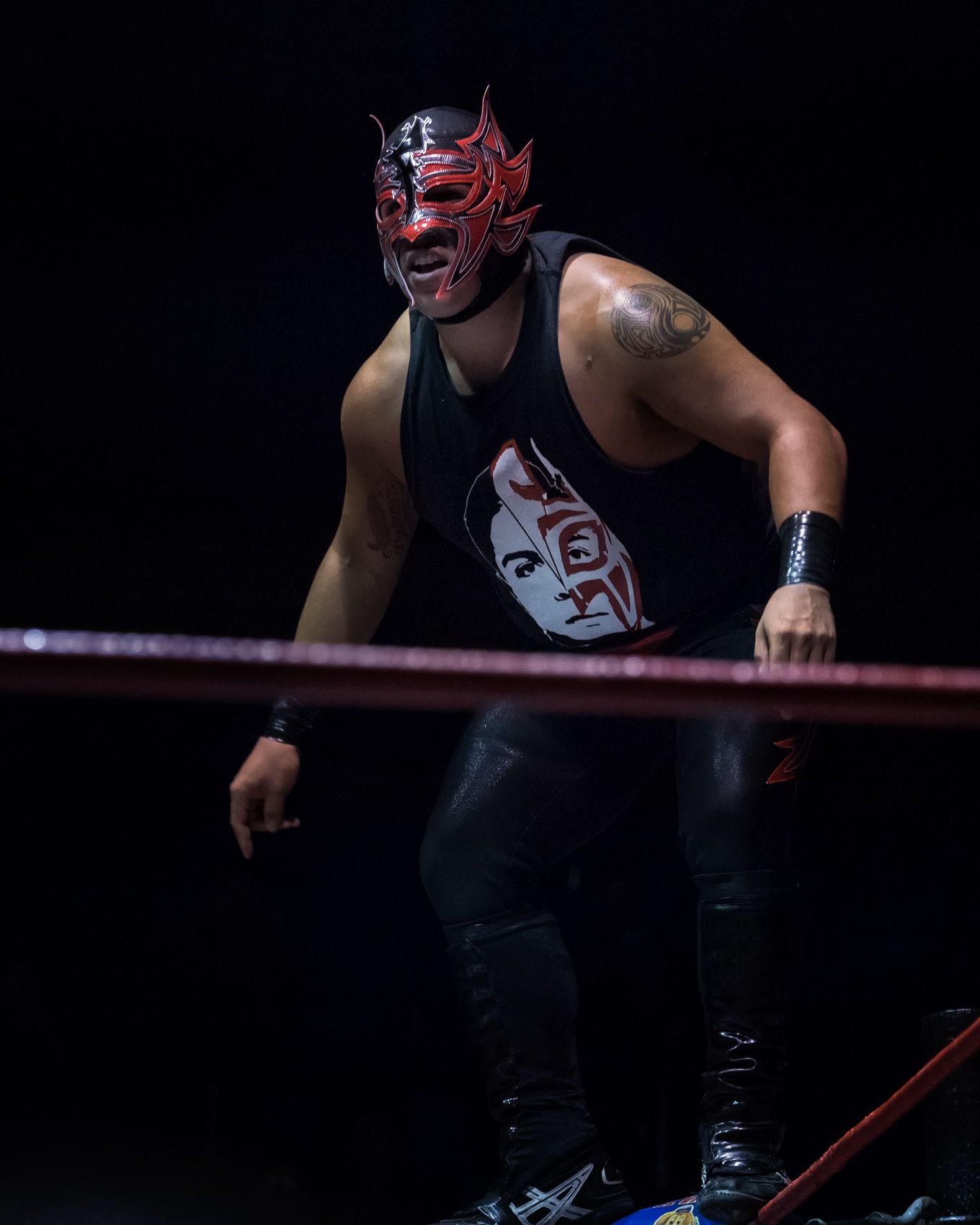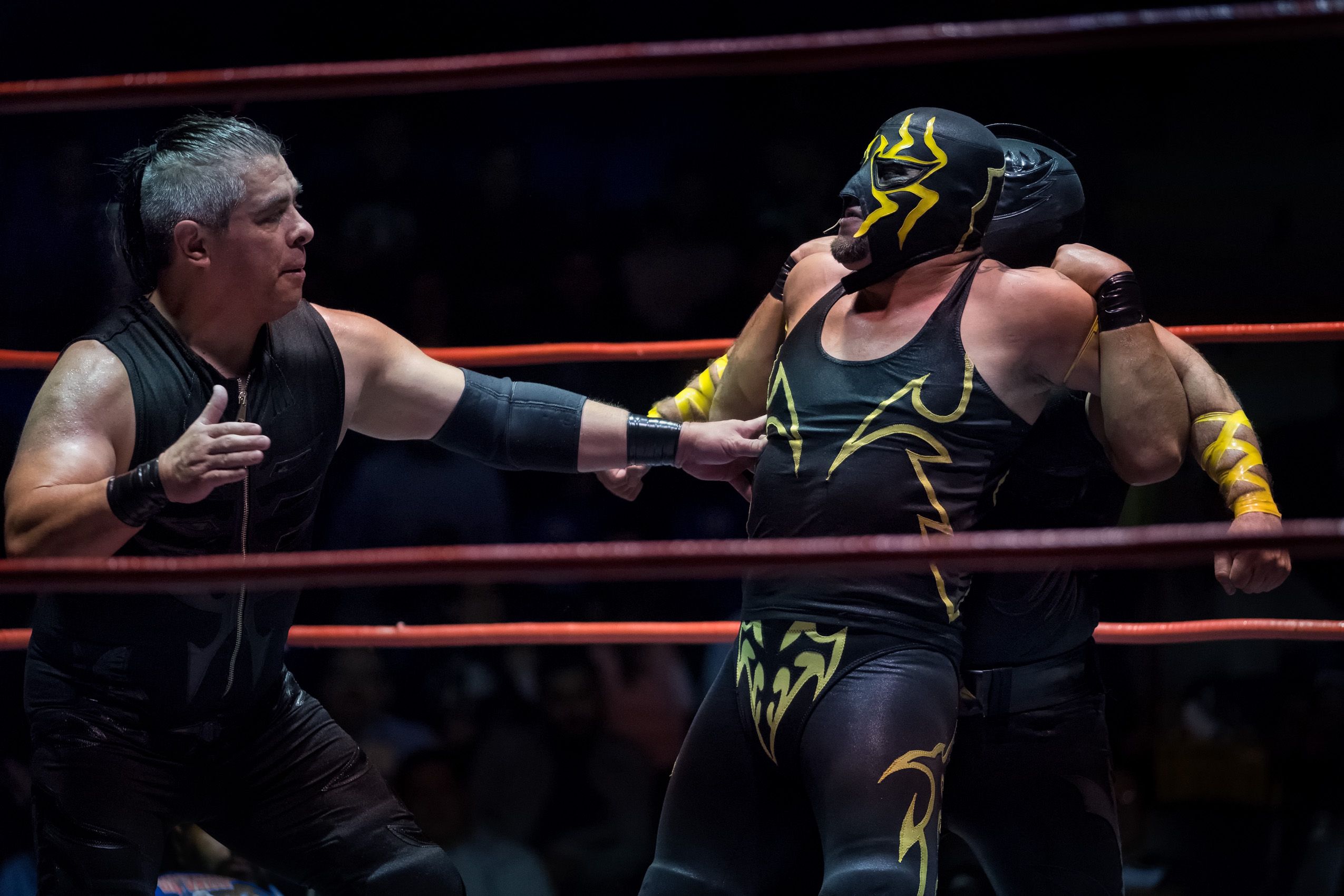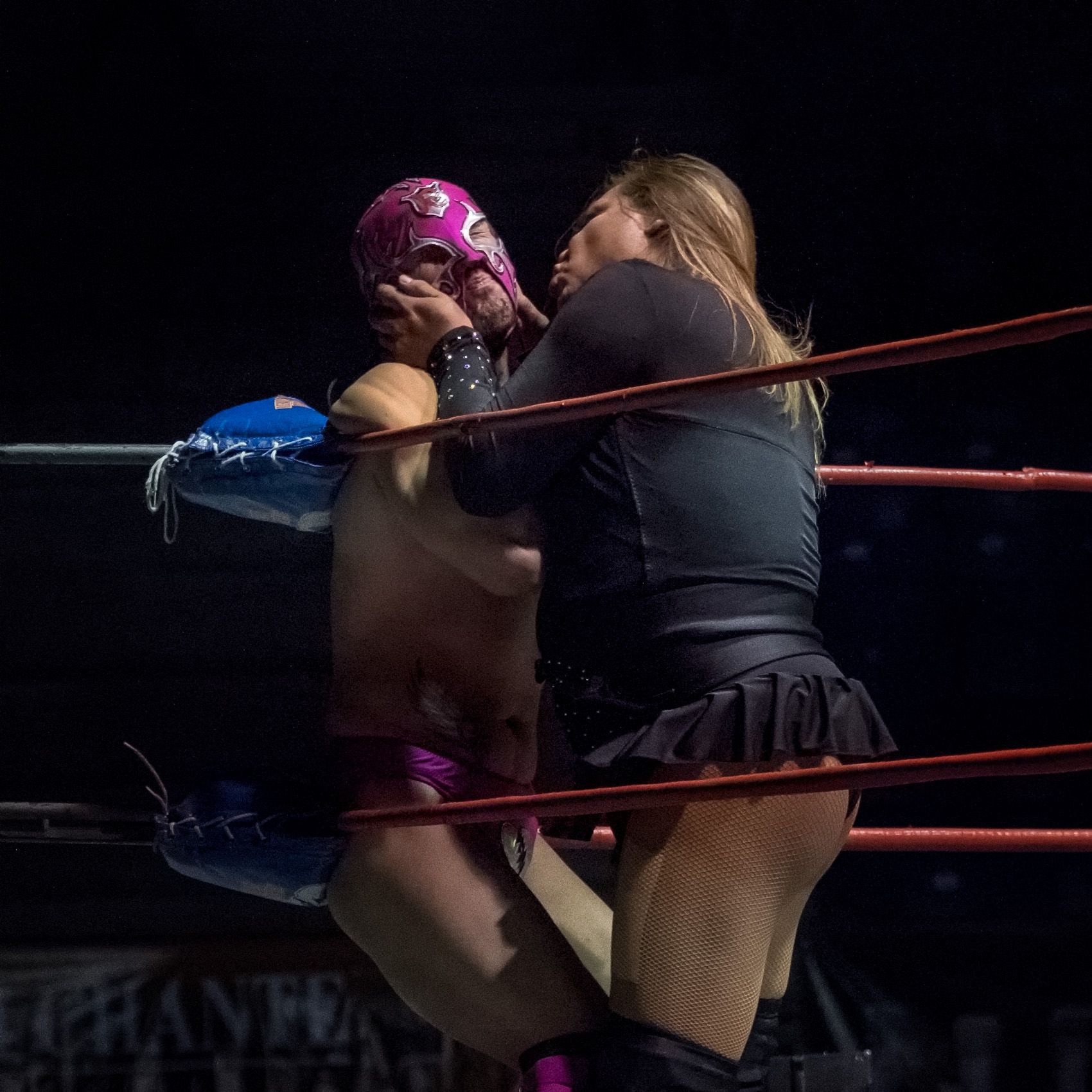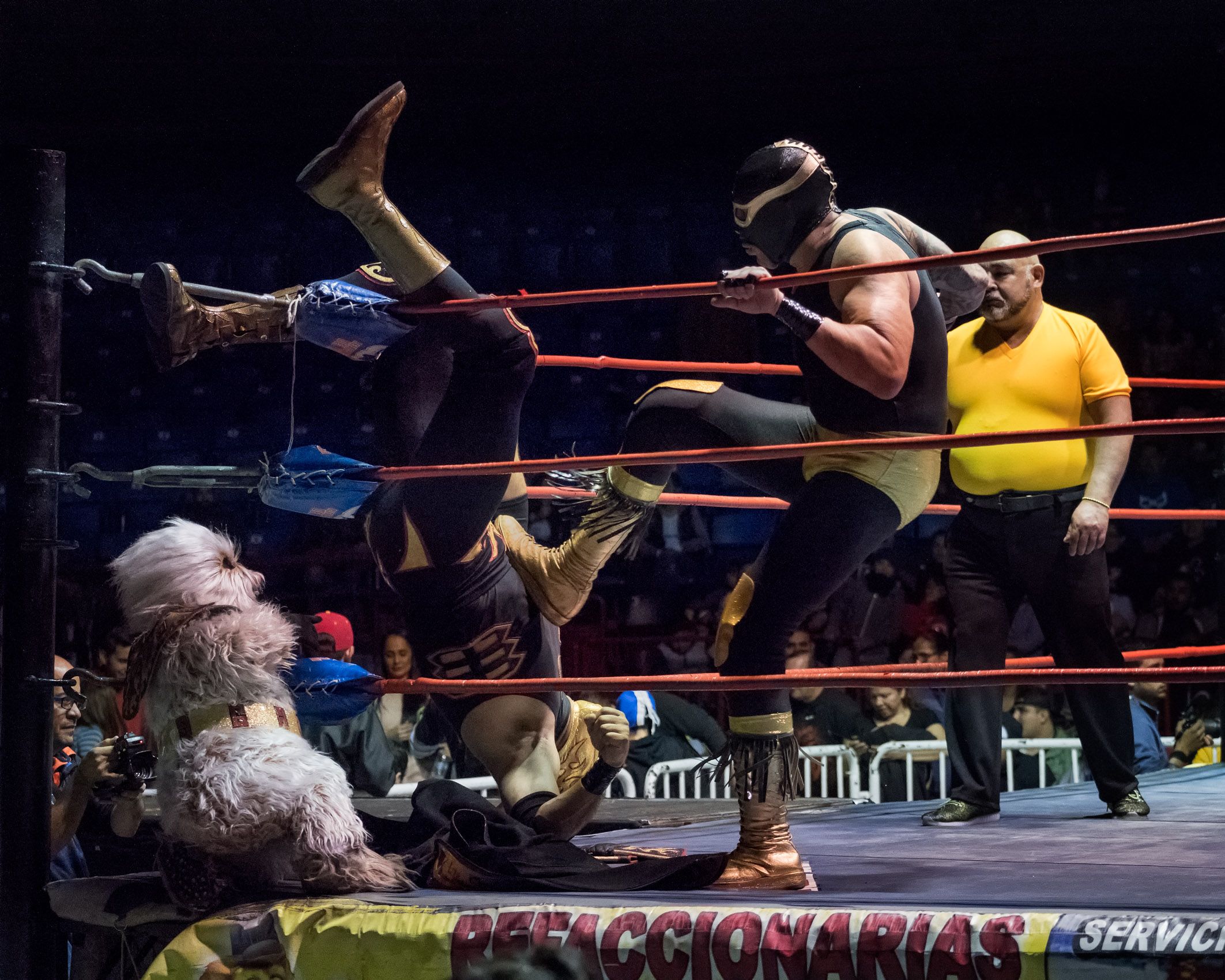MEXICO: ¡Lucha Libre!
Lucha Libre , Mexico's distinctive version of freestyle professional wresting, may date to the later nineteenth century but did not become established in something resembling its current form until the 1930s in Mexico City. Like its U.S. counterpart, it is partially scripted and choreographed and divided into three rounds in which the ostensible object is to pin an opponent for a count of three. Lucha Libre places much more emphasis than its northern relative on aerial and other gymnastic feats as distinct from brute strength. The real object, of course, is to maximize the enjoyment and enthusiasm of the audience. To this end, Lucha Libre has developed into a spectacular popular performance art that mixes physical skill with coarse exhibitionism, violence and mockery. Among the distinctive elements of Lucha Libre are the masks (mascaras) worn by many of the luchadores, which confer on them a mysterious identity and distinctive persona, sometimes handed down from one luchador to another. The exploits of celebrated luchadores have found their way into popular Mexican cinema and comic books. Matches typically pit one or more “good guys” (técnicos) against “bad guys” (rudos), and may include as combatants women wrestlers (luchadoras) as well as men, male transvestites (exóticos) and dwarves (minis). The action frequently spills out of the ring and into the front row seats. There is much eating, beer-drinking and socializing within the audience during the course of an evening’s performance; indeed, some members of the audience can be almost as rowdy as the performers, and the violence, mockery, and vulgar display appear to provide a cathartic experience for the crowd.
NOTE: These images are not available for commercial use; copying or reproduction in any medium is strictly prohibited.


















